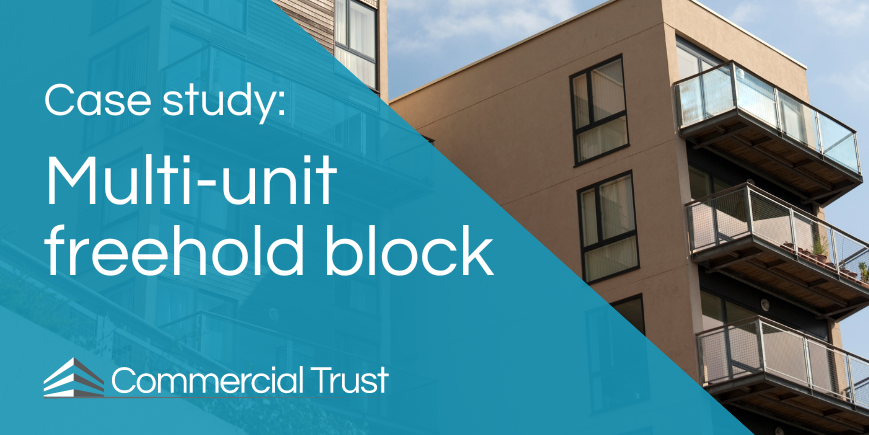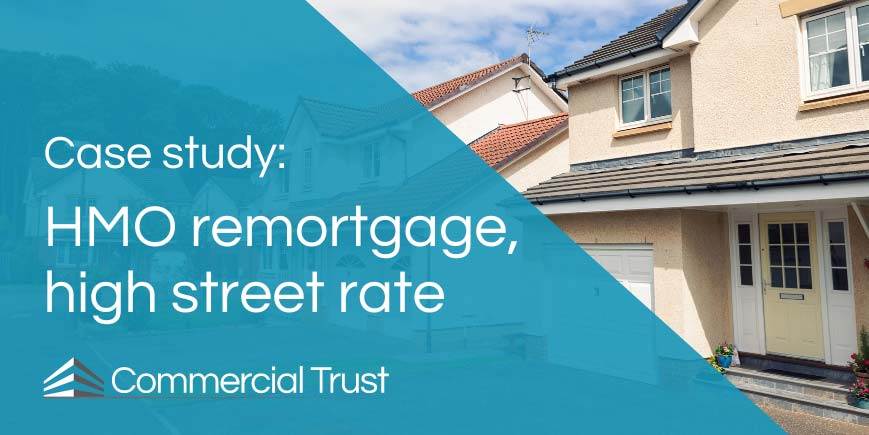This information should not be interpreted as financial, tax or legal advice. Mortgage and loan rates are subject to change.

Categories: Case study | limited company | mufb
Summary of the case
- Remortgage of Multi-Unit Freehold Block
- Investing through a limited company
- Four director applicants, one majority shareholder
- Borrowing of £1.9m
What we achieved for the client
- Negotiated that personal guarantees be given by just one major shareholding director, rather than all four applicants
- Secured lending despite the property being a “broken-block” (see below for details)
- Secured rate of 4.19% per annum, where the client was previously paying 6% per annum
The challenges of the case
Our client came to us looking to remortgage their Multi-Unit Freehold Block. This type of property falls into a specialist area of lending, as you might imagine from the title.
What is a Multi-Unit Freehold Block?
A multi-unit freehold block (MUFB) is a scenario where multiple residential units are held under one freehold title, or title deed (a legal document which outlines the tenure – freehold or leasehold – the boundaries and the legal ownership of a property).
Examples of multi-unit freehold blocks properties:
- Purpose built blocks of flats
- Houses converted into flats
- A row of terraced houses
Each property or ‘unit’ is self-contained, meaning different tenants can live in each one. There may be shared facilities available to all, such as a hallway or a communal garden.
A multi-unit freehold block (MUFB) is different to a house of multiple occupancy (HMO). In an HMO (for which an HMO mortgage is applicable), tenants will typically share essential facilities such as a bathroom and/or kitchen, whereas an MUFB will be fully self-contained.
Both property types may require more administration. But, both MUFBs and HMOs typically have higher yields than a standard buy to let property, as there are multiple rental income streams. In addition, if one tenant leaves, there are still others paying rent, so the full income of an MUFB or HMO property is not lost, which mitigates the financial impact to the landlord.
Can you get a mortgage on a block of flats?
It is entirely possible to get a mortgage on a block of flats, but the type of mortgage you would get would depend on the lease set-up. If each property within the block had its own title deed, then they would be treated as individual properties and you would need a standard buy to let mortgage per property, with criteria suited to flats.
Whereas, if there is only one title deed across all of the flats, you would need a buy to let mortgage with criteria suited to a Multi Unit Freehold Block, this tends to me more specialist and so the lender you would use would be more specialist.
What is a “broken block”?
A broken block, when used in the context of multi-unit freehold blocks, means that the units have different owners.
In the case study for this particular client, there were originally six flats or units within the MUFB, however two flats had been sold.
Given MUFB’s already sit firmly within a specialist area of lending, these circumstances made the property that bit more unique, with fewer lenders who would accept it.
We were able to find a suitable lender, but it is a point to consider, when looking at a mortgage on an MUFB.
Limited company mortgages and personal guarantees
When investing via a limited company buy to let mortgage, applicants are typically required to give personal guarantees whereby, if the company fails to make payments, they will be responsible for paying back the loan.
Of the applicants in this scenario, three directors were employees of the company only, with the fourth being the majority shareholder.
For this reason, the majority shareholder was keen to take on the full risk of the personal guarantee. Our advisor had to negotiate this with the lender they had identified, because it falls outside the typical set up of a limited company mortgage.
Achieving a significantly lower rate of interest on an MUFB
With every product we research for a client, finding a competitive buy to let mortgage interest rate is always a factor. For this client, the annual interest rate they were paying was 6%. The client was exiting a commercial finance product, where rates are typically higher than with buy to let deals.
Our research identified a far lower annual interest rate of 4.19% on a specialist buy to let mortgage whose criteria included MUFB’s as the security property.
On borrowing of £1.9 million, the onward saving was therefore a very considerable sum.
If you are looking to invest in a multi-unit freehold block, or remortgage a property of this type, the above illustrates that the detail of your case is significant. Call our team to get our specialist help or send us your details.






